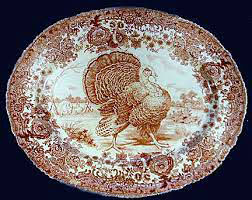 QUESTION:
QUESTION: As the holidays approach, I get out my Oneida silver flatware and polish it up for another joyous season. Beginning with Thanksgiving dinner, I use a setting for 12 that’s been in our family for four generations. Except for the classic beauty of this tableware, I know very little about it. Can you please tell me more about Oneida?
ANSWER: The holidays, especially Thanksgiving, are all about traditions in many families. Your use of your Oneida family heirloom is no exception. But Oneida didn’t always make silver flatware. In fact, at one point early in the company’s existence, it made grizzly bear traps.
Oneida, Ltd. actually began as a utopian religious commune in 1848. At that time, there were several such communities that existed in the northeastern United States. Oneida was one of them.

John Humphrey Noyes and his followers founded the Oneida Community in Oneida, New York. Members of this Protestant, religious sect referred to themselves as Perfectionists because they believed that spiritual perfection could be achieved by them in this world. This was a common concept among 19th-century utopian communities. Much like the Shakers, members contributed all their worldly goods to the community when they joined it. The community held all possessions in common, and it provided for everyone's needs. They called this practice "Bible communism.''

But the Oneida Community is best known for its unconventional family arrangements. Members practiced what Noyes called complex marriage—every man was married to every woman, just as every woman was married to every man. Although neighbors surrounding the community saw this as "free love,” the Perfectionists defended complex marriage as noble and unselfish, since all were expected to be loving to each other. It discouraged individual relationships. During its early years, the community also discouraged child bearing, but by 1869 when the community had become more prosperous, its elders selected couples with desirable qualities and encouraged them to bear children. John Humphrey Noyes himself fathered several, including sons who were later very active in the affairs of the future company. Oneida, Ltd.
At first the Perfectionists tried to support themselves by farming and by preserving and selling fruits and vegetables. But this didn’t provide sufficient income, so they branched out into several industrial activities. An 1890s ad offered a booklet which told how the community came to make such interesting and incongruous things as delicious preserved fruits and traps for catching grizzly bears, fine sewing and embroidery silk, d steel chains, and beautiful flatware. Let’s face it, not many silver companies started out making traps for grizzly bears.

By 1877, when the Wallingford, Connecticut, branch of the community started making tin-plated spoons, the original Oneida Community was beginning to break up. In 1879, Noyes moved to Canada and members abandoned the concept of complex marriage. In 1880, the assets of the community were distributed to its members in the form of stock in the newly formed corporation, Oneida Community, Limited, making it one of the earliest joint-stock companies in the United States.
The new company, under the leadership of P.B. Noyes, one of the sons of the founder, first moved its silverplate production to Niagara Falls, New York, and later to Sherill, New York, within walking distance of the original Oneida Community property. It began production of silver-plated flatware and hollow-ware in 1899 using the "Community Plate" mark.

When the community became a corporation, some members found it difficult to adjust to the new business practices and divided into factions, each competing to control the board of directors. But the younger Noyes remained in control and moved the company into manufacturing higher quality wares in sterling silver, including a flatware line called Avalon in 1901. In 1929, it purchased the William A. Rogers Company began producing a lower-quality line of products using that company’s mark. In 1935, the firm changed its name to Oneida, Ltd.
By 1961, Oneida, Ltd. began producing stainless steel flatware. And by the 1980s, Oneida made at least half of all flatware purchased in the United States. At the end of the 20th century, Oneida fell upon tough economic times, becoming the last remaining U.S.-based manufacturer of flatware, knives, forks, and spoons. The resulting economic troubles resulting from 9/11 forced it to close or sell off most of its factories.
It filled for bankruptcy in 2006, and after finally stabilizing, Monomoy Capital Partners, an equity fund based in New York City, acquired it. Today, it services much of the food service industry with both china and flatware.
To read more articles on antiques, please visit the
Antiques Article section of my Web site. And to stay up to the minute on antiques and collectibles, please join the other 24,000 readers by following my free online magazine, #
TheAntiquesAlmanac. Learn more about antique clocks in the Fall 2019 Edition, "It's That Time Again," online now. And to read daily posts about unique objects from the past and their histories, like the
#Antiques & More Collection on Facebook.































